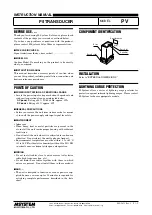
INTRODUCTION
42
D-ST
AR GUIDE
1
7
4
10
15
18
2
8
13
5
11
16
3
9
14
6
12
17
■
What is D-STAR?
•D-STAR is a digital protocol standard developed by the Japan Amateur Radio League
(JARL). The system includes the DV mode for Digital Voice and the DD mode for Digital
Data communications.
•D-STAR supports the DV mode at 4.8 kbps. Your call sign data, and either a short
message, or GPS data can be transmitted simultaneously with your voice signal.
•D-STAR supports a comprehensive repeater system linked through the Internet,
enabling you to make QSOs with stations near or far from your location.
Advanced Amateur radio technology of D-STAR
The DV mode has a bandwidth of only 6 kHz, compared to 16 kHz for the analog FM
mode, with 5 kHz deviation. D-STAR utilizes the well-know GMSK modulation method
that makes very efficient use of occupied bandwidth.
Frequency
fo
16 kHz
16 kHz
10 kHz
10 kHz
10 kHz
10 kHz
20 kHz
20 kHz
10 kHz
10 kHz
10 kHz
10 kHz
20 kHz
20 kHz
FM (F3E)
Frequency
fo
6 kHz
6 kHz
10 kHz
10 kHz
20 kHz
20 kHz
10 kHz
10 kHz
10 kHz
10 kHz
20 kHz
20 kHz
10 kHz
10 kHz
D-STAR (F7W)
D-STAR occupies 10 kHz.
The sound quality is good
even though the bandwidth
is narrow.
The regular FM mode
occupies 20 kHz that is
double the bandwidth of
D-STAR.
















































